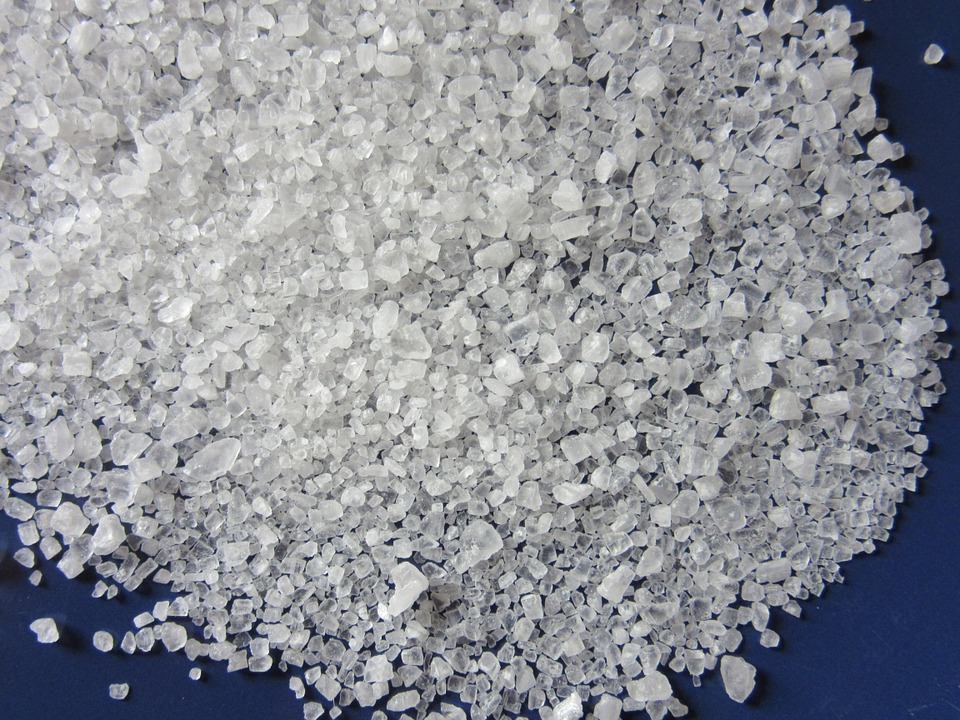BLOG NUMBER 19.75
Throughout the colder months of winter, de-icing agents are frequently applied to roads, walkways, patios, stairs, and other outside surfaces. Road salt is currently the most popular application for creating safe, slip-proof areas that people can comfortably walk or drive over. Relatively inexpensive and fairly easy to acquire, road salt is used by many municipalities, business owners, and homeowners each year. Road salt is typically paired with other snow and ice removal efforts such as shoveling or plowing. Once the majority of winter accumulations have been pushed or scooped away, modest applications of salt help expedite further thawing. This ensures that recently cleaned surfaces do not develop a slick, slippery coating even though they appear pristine.

Whether you own a residential or commercial property, snow and ice removal can be a key part of fulfilling your duty of care. Unless appropriate removal actions are taken, property owners can be held liable for all slip and fall accidents, and for any other personal injuries sustained as the result of snow and ice-covered surfaces. One very important part of performing or scheduling these treatments is understanding how long they take to work, and how often they’ll need to be repeated. If you find yourself dealing with a premises liability claim resulting from slick, slippery surfaces, any documented history of snow removal and salt applications may help bolster your defense. In cases like these, even seemingly minor details can have a significant impact on settlement outcomes.
How Salt Works as a De-Icing Agent
Contrary to popular thought, salt doesn’t actually melt ice. Instead, the addition of salt lowers the freezing temperature of water. While untreated ice, rain, snow, or sleet typically freeze at about 32 degrees Fahrenheit, these same substances won’t freeze at all until they’ve reached 15 degrees Fahrenheit once they’ve been combined with salt. In moderately cold areas, this makes salt applications pretty effective. Temperatures will have to drop quite low before post-treatment accumulations freeze. As a result, treated grounds tend to be covered in wet, slushy puddles, rather than being coated with slick, hazardous, icy coatings.
There are, however, other details that affect the efficacy of salt applications. Road salts alone aren’t effective for melting existing sheets of ice, especially in relatively low-traffic areas. These applications rely on the friction of tires to help activate them. Thus, when ice is applied to recently plowed roads, tends to work best after multiple cars have been driven over the treatment area. On residential or commercial walkways, or on regular sidewalks, less friction from traffic can result in salty, icy surfaces that are only mildly easier to traverse. This is why people are often advised to lay salt down before snow and ice accumulations have actually formed.
Given the significant concern that widespread salt applications cause for the natural environment, consumers are advised to use road salt both sparingly and wisely. Low-traffic areas should always be treated before actual snowfall or freezing. If they are not, they should be thoroughly scraped clean with shovels or other snow removal tools, treated, and then closed off until de-icing has occurred. Moreover, as little as 12 ounces of salt is sufficient for treating a 20 foot long driveway or an equivalent section of sidewalk.
If you’ve been diligent about clearing your property of ice and snow, and have used smart strategies for applying salt, you’ve likely fulfilled your duty of care. With any premises liability case, it’s important to consider factors such as the time of snowfall, the schedules for snow removal and salting, and any changes in outdoor temperatures or other weather conditions prior to the claimant’s slip and fall event. There is no specific span of time for which melting is guaranteed after salt has been applied. Applying salt to roadways and other surfaces that have already reached significantly low temperatures will require either the application of friction, or longer time for melting. Property owners can protect themselves in instances like these by putting up safety signage, roping potentially hazardous areas off, or implementing supplementary melting strategies. If you’re facing a snow or ice-related premises liability case, we can help. Call us today at (816) 564-9131.
DISCLAIMER: Information contained in this Website and blog is intended for informational purposes only and do not necessarily reflect the direct opinions, views or practices of Swenson Consulting or its consultants. The individuals who maintain this blog work for Swenson Consulting. The information, comments and links posted on this blog do not constitute legal advice. No attorney-client relationship has been or will be formed by any communication(s) to, from or with the blog and/or the blogger. All decisions relating to the content of the website blog belong to the blogger and management company responsible for the blog for the purpose of aggregating relative industry specific information related to snow removal.
